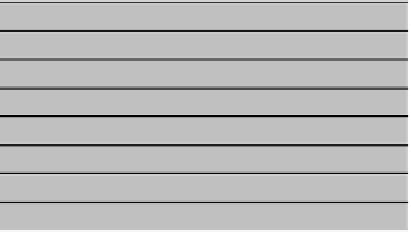Geoscience Reference
In-Depth Information
by 4" (latitude), or approximately 140 m, and included four general cover classes (i.e., water, forest,
urban or developed, and other nonforest land). For illustrative purposes, here we stratified the cover
classes into two categories (i.e., forest vs. nonforest).
A total of 5300 reference sites were identified within extended regions of thematically homo-
geneous cover based on supporting evidence from aerial photography interpretation and topographic
map inspection. They represented the spectral dispersion of each class. Since each Landsat scene
encompassed 100 to 150 sites, the classification labels of pixels within five-by-five-pixel neighbor-
hoods of each site were analyzed to derive estimates of producer's accuracy. These estimates were
optimistic, since pixels near interclass boundaries were not included, and should not be viewed as
a measure of accuracy in the absolute sense.
10.4.1
Variation of Consistency among Clusters of a Given Class
Classification consistency analysis was undertaken on a scene once it and its immediate neigh-
boring scenes had been classified. The scenes from adjacent paths were most important since they
provided the greatest overlap and were not temporally correlated to the central scene. Using QUAD-
LACC, consistency evaluations were performed at the cluster level with each cluster assigned an
integral consistency measure of 0.0 to 10.0 corresponding to a range of classification agreement
of 0.0 to 100%. As an example, we use the case of scene 16/29 from the 1990s epoch. The LC of
this scene was approximately equally divided between forest and nonforest classes, with the forest
class encompassing a total of 52 clusters. An analysis of the two cross-track overlap regions (i.e.,
with scenes 15/29 and 17/29) indicated that 76.4% of 710,610 overlap pixels classed as forested
in scene 16/29 were also labeled as forest in one of the cross-track neighboring scenes, leading to
an overall class measure of 8.0. For the hypothesis that all clusters were equivalent in terms of
consistency, we estimated the approximate dispersion in cluster consistency measures from binomial
theory (Thomas and Allcock, 1984). Assuming equal pixel populations per cluster, the predicted
1-sigma spread in consistency among clusters should be only ± 0.05% (i.e., practically all clusters
should exhibit a consistency measure of 8.0). Figure 10.4 shows the spread in observed consistency
measures for the clusters of scene 16/29. Note that the histogram contained 104 entries, since each
overlap region provided an independent measure estimate for each cluster. The observed distribution
was much broader than predicted by the binomial model, indicating that there is a significant spread
in classification quality among clusters and, hence, added accuracy information was available at
the cluster level.
Distribution of Consistency Measures for
Forest Clusters of Scene 16/29
40
35
30
25
20
15
10
5
0
1
2
3
4
5
6
7
8
9
10
Consistency Measure
Figure 10.4
Histogram of consistency levels for forest clusters of scene 16/29. The dispersion among values
is indicative of the broad differences in classification “quality” among member clusters within a
given class.



















